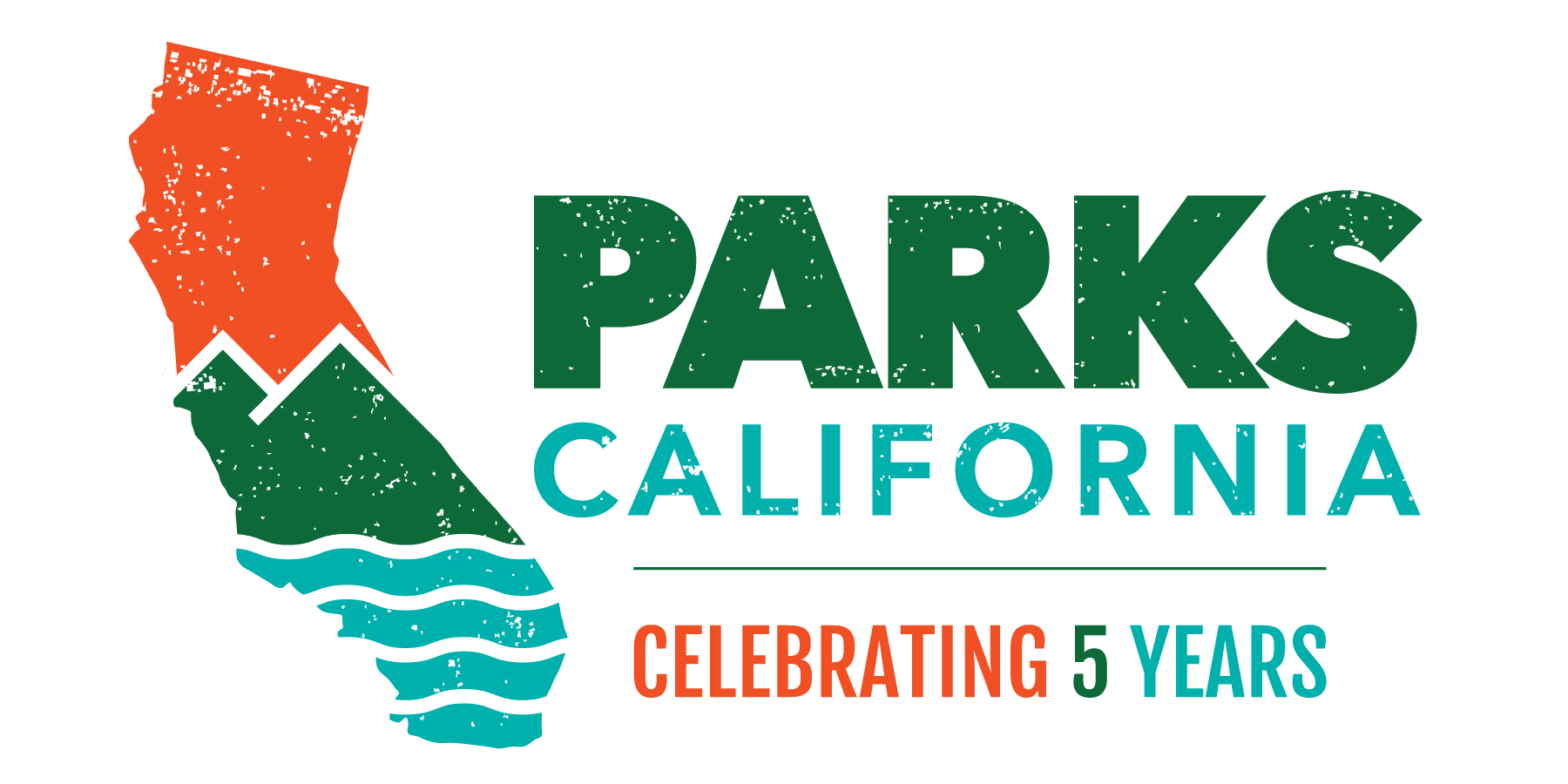Just south of Carmel and north of Big Sur sits a hidden treasure of a hike in Garrapata State Park. The Soberanes Canyon trail starts with gorgeous views of waves crashing against cliffs below and hills of chaparral shrubs above.


It’s an awe-inspiring setting for anyone, and a great location to support young adults in developing a connection to nature — just what Parks California is doing across the state with our Route to Parks program. We recently joined our Route to Parks grantee, Ventana Wildlife Society, along with Judy de Freitas of PG&E, a program funder, for one of their Teen Watershed Programs.
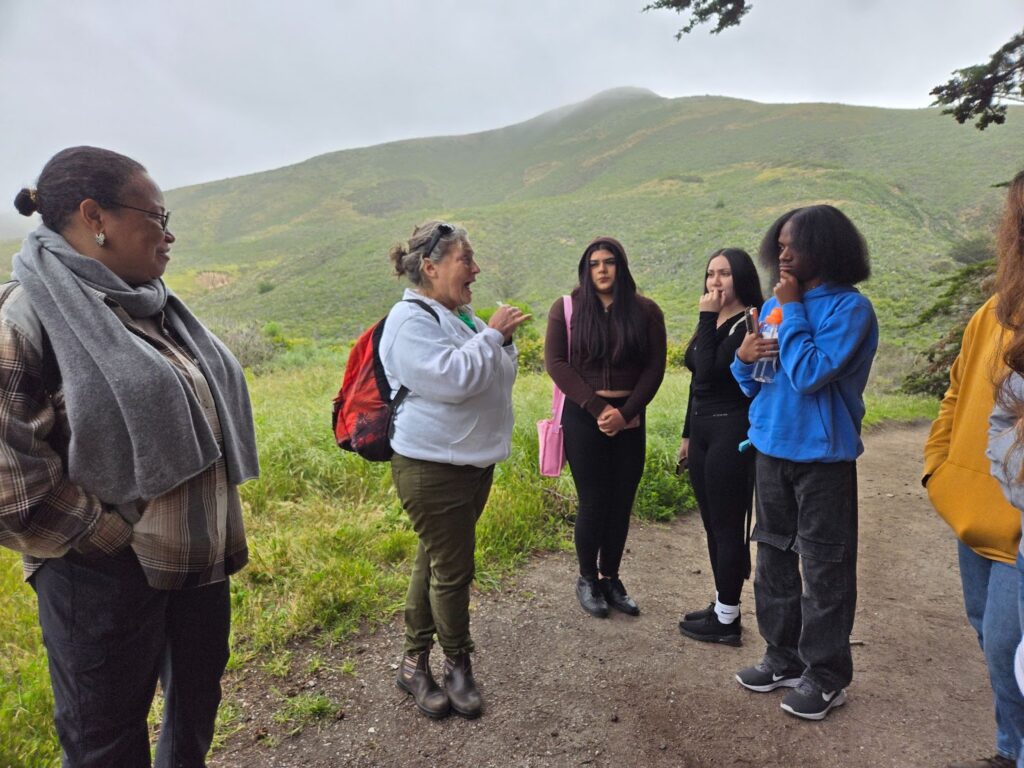
Route to Parks increases access to California State Parks for people who experience transportation barriers to developing a life-long connection to nature and the outdoors. The Ventana Wildlife Society program provides local youth enrolled in alternative education programs with up to 12 field trips in a semester, including to State Parks located in the Monterey watershed to explore and deepen their understanding of the natural areas. Monterey County Office of Education (MCOE) contracts with Ventana to provide these programs. The goal of MCOE is to support whole child education and exposure to nature and the local environment.
After acknowledging the tribal lands and a brief introduction circle, the students were off. On this hike, the group crossed streams four times each way, and ended up in a redwood forest. At the first creek crossing. Marci Greenberg, an instructor from Ventana, asked the group to help each other out, making their way across the creek rocks. After you crossed the creek, you turned around and lend a hand to the next person in turn. Everyone made it across, only one foot of the entire group got a little wet!
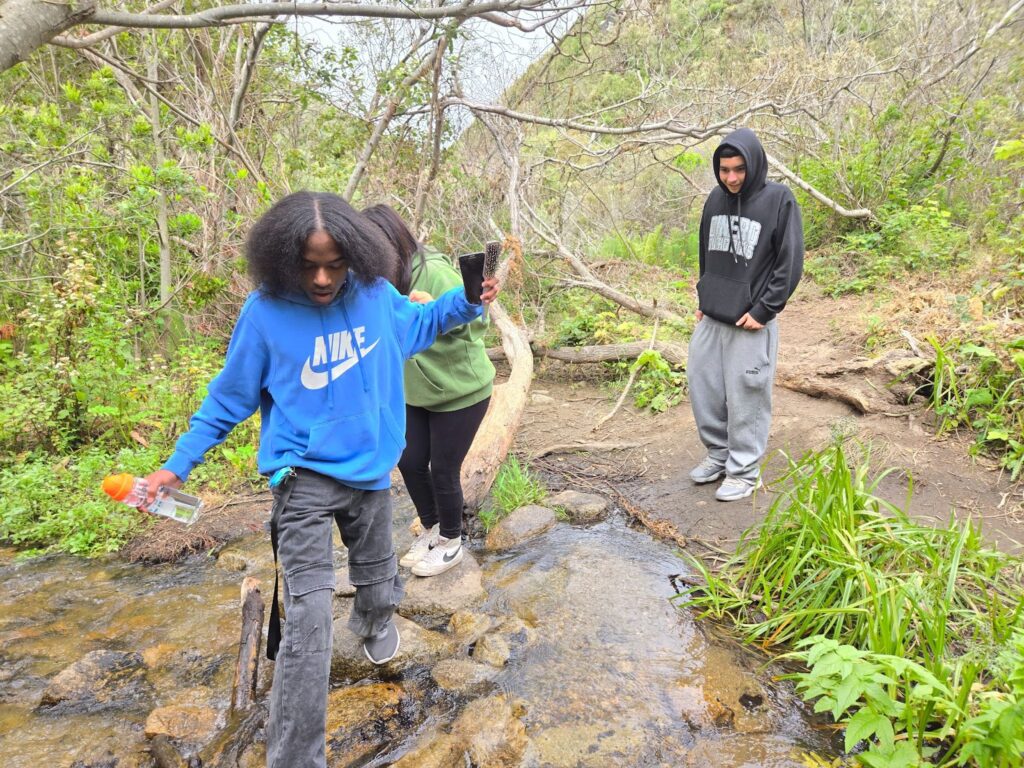
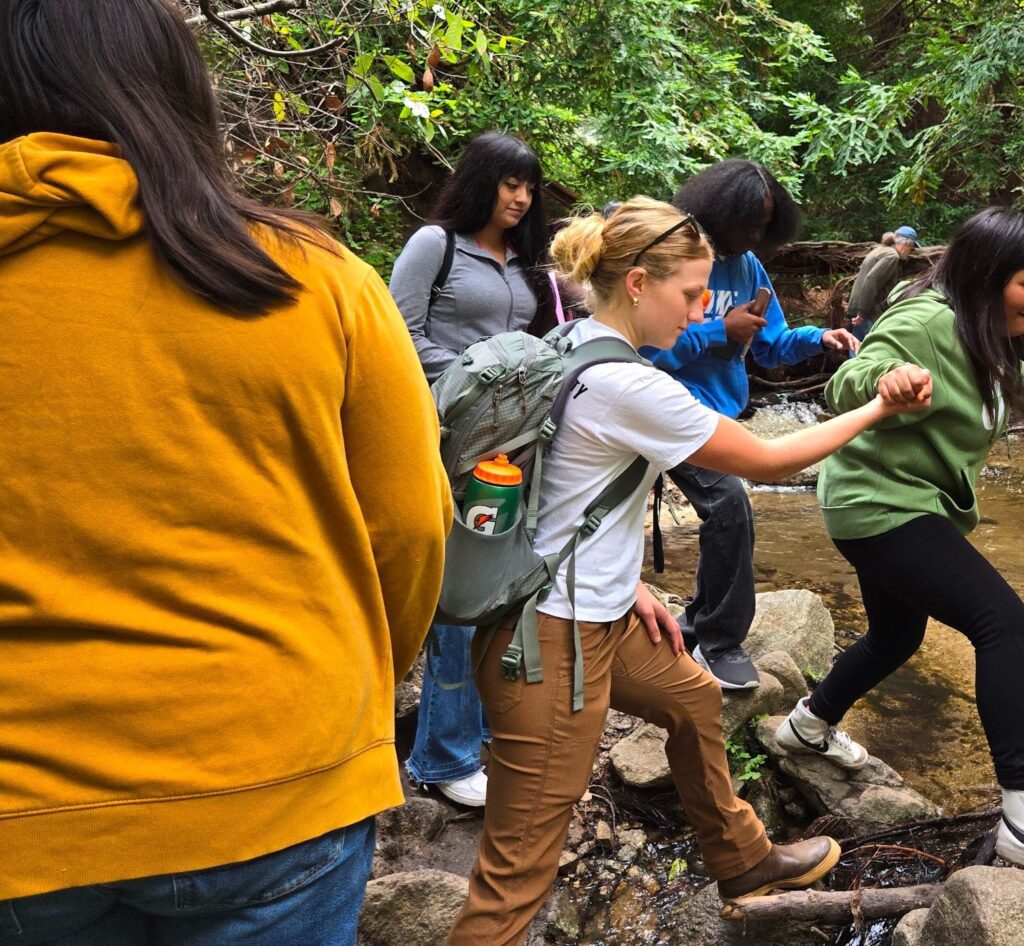
Throughout the hike, participants stopped to admire flowers, insects, and lizards. First, we walked through the chaparral ecosystem, with lots of prickly pear cactus, poison oak and other low growing shrubs. Wildflowers like poppies, paintbrush, hedgenettle, and sticky monkeyflower were scattered throughout. We stopped to have students smell sagebrush. We also learned that an insect called spittlebug excretes and builds a cocoon-like house of bubbles to protect themselves when they are nymphs until they are adult froghoppers.
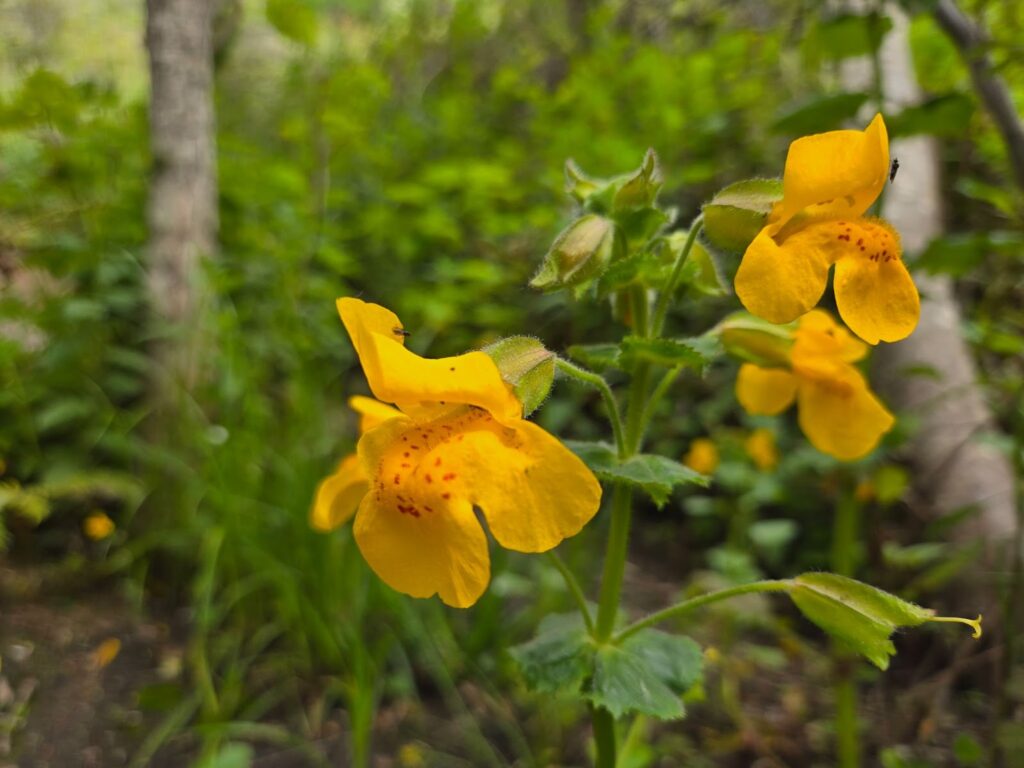
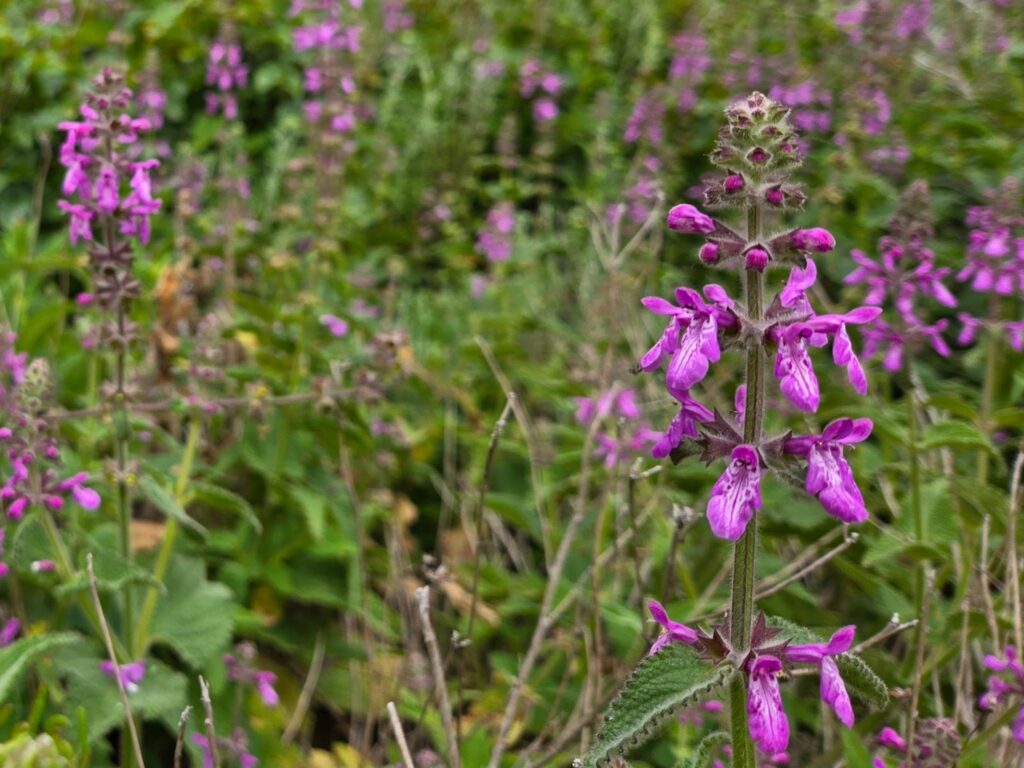
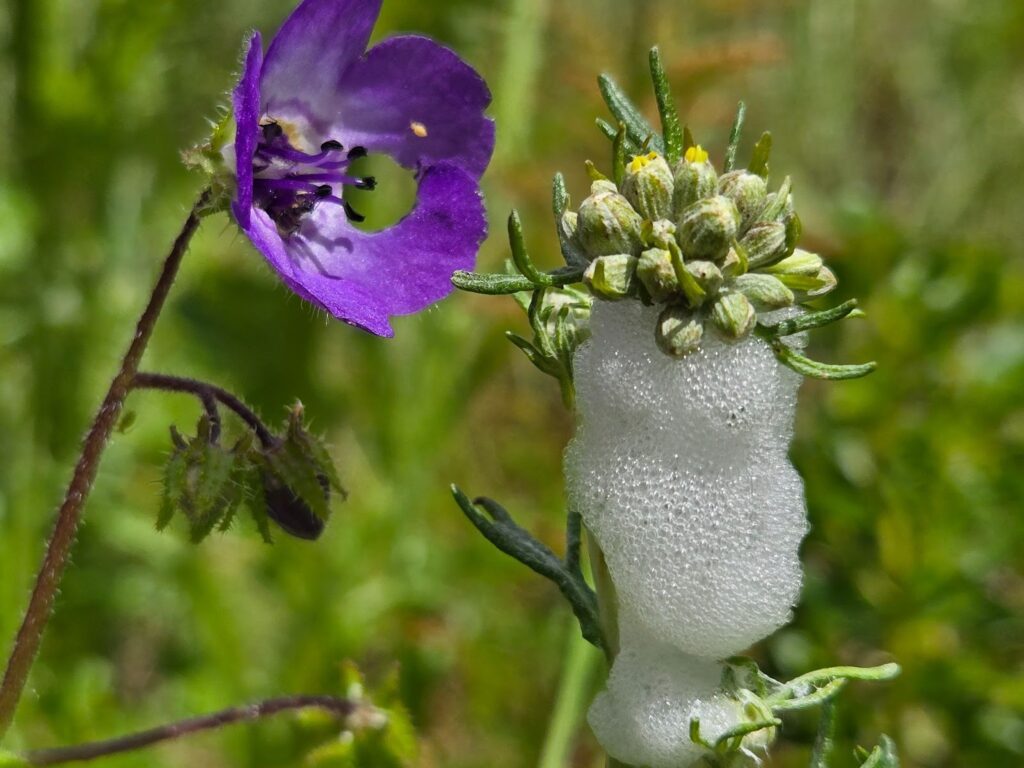
Curiosity continued throughout the hike and teamwork and problem-solving happened at each creek crossing. The whole group stopped again once we reached a large redwood tree. Marci shared that redwood trees have adapted to challenging times, for example their thick fuzzy bark protects them during fire. They also help each other out through their root systems. For example, the trees near the creek can share water through their root systems to the tree we stood next to. She encouraged us to be like the redwood trees and find beneficial connections.
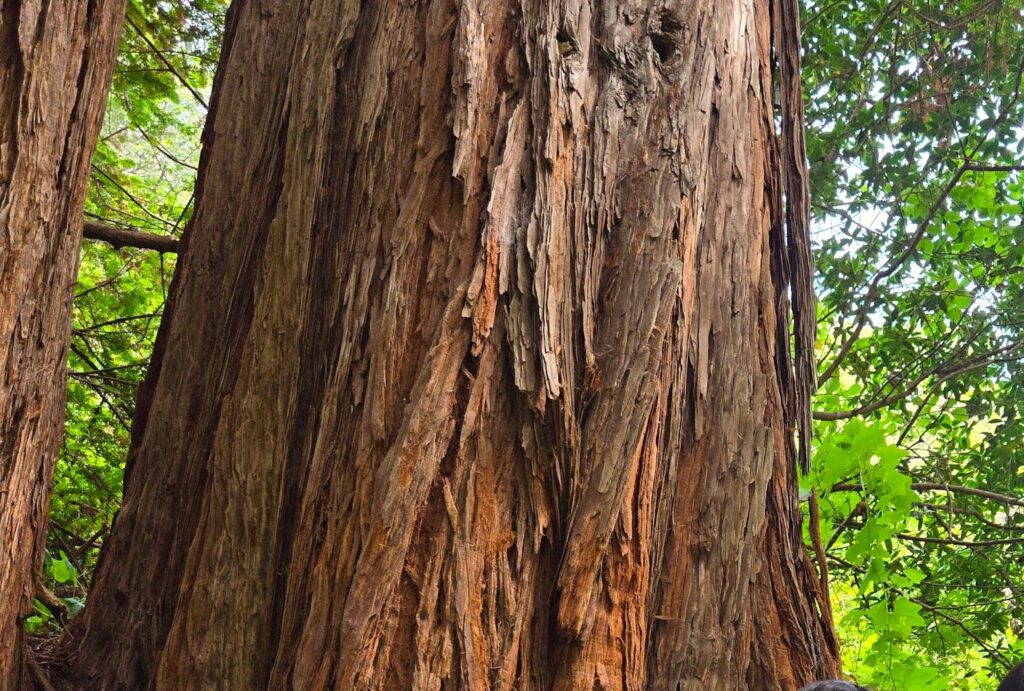
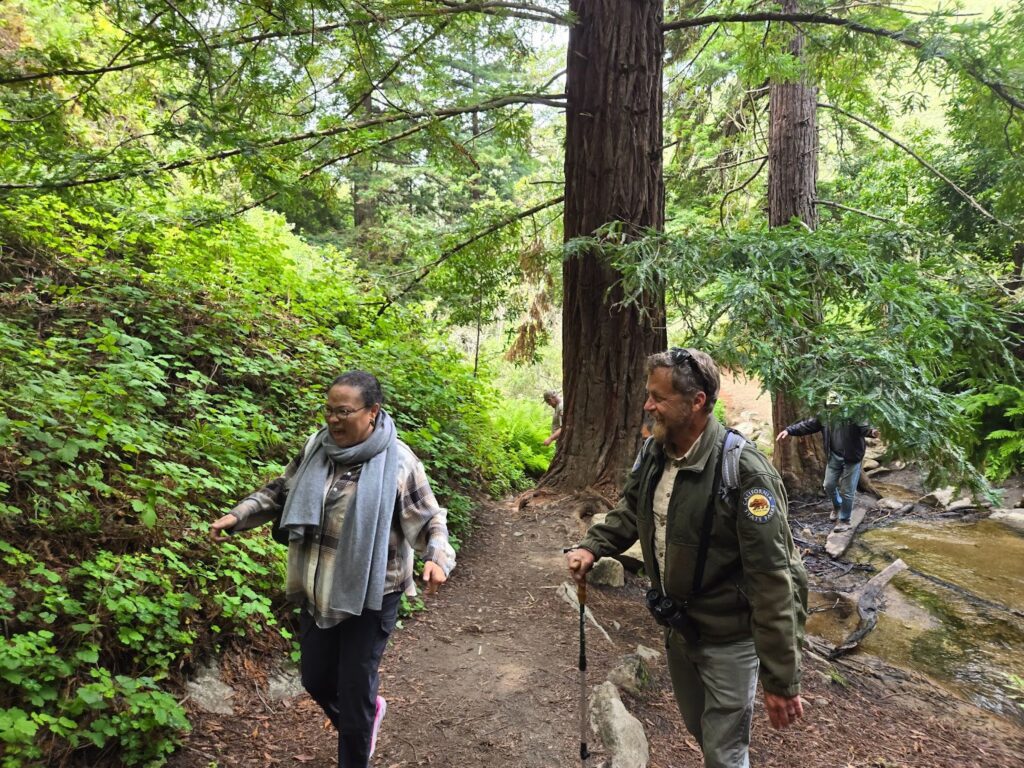
When the group paused for a crayon and watercolor art activity, a student named Alisa exclaimed, “I love painting.” The teens collected water from the stream to paint with. This is Alisa’s fourth outing. When I asked what she enjoys about these trips she shared, “I love the teachers, Marci, I love being out in nature. I don’t go out much. It brings me happiness and makes me feel good. I feel like one with nature again. Each time we go on these trips it’s a reconnection with nature.” Siere, also known as “SJ,” who was on his first Ventana trip, said, “I like seeing different things I didn’t know about, different parts of nature. It is just beautiful here, it’s really nice.”


Over the course of this semester, Ventana’s Teen Watershed Program Coordinator Matea Meadows-Hills has seen huge changes in students: “These are students who have been through hardship and, although they are still children, they have been hardened by the world. We bring them into natural places and see their child-like innocence come back. They tell me, ‘I feel like a little kid.’ This is what they deserve and how it should be. Nature opens up this whole new world that they don’t traditionally have access to.”
PG&E Community Relations Principal Judy de Freitas shared, “I loved hearing the squealing, that sort of surprise. The students were shy but sharing things with each other and building their own relationship with nature. And that’s what they’re going to remember. During the hike we had to navigate across a couple of streams that would be difficult to jump over. I remember their teacher saying ‘Step through the water, then turn around and help the person behind you.’ That’s not just a lesson for hiking. That’s a life lesson and we are so happy to be part of it.”
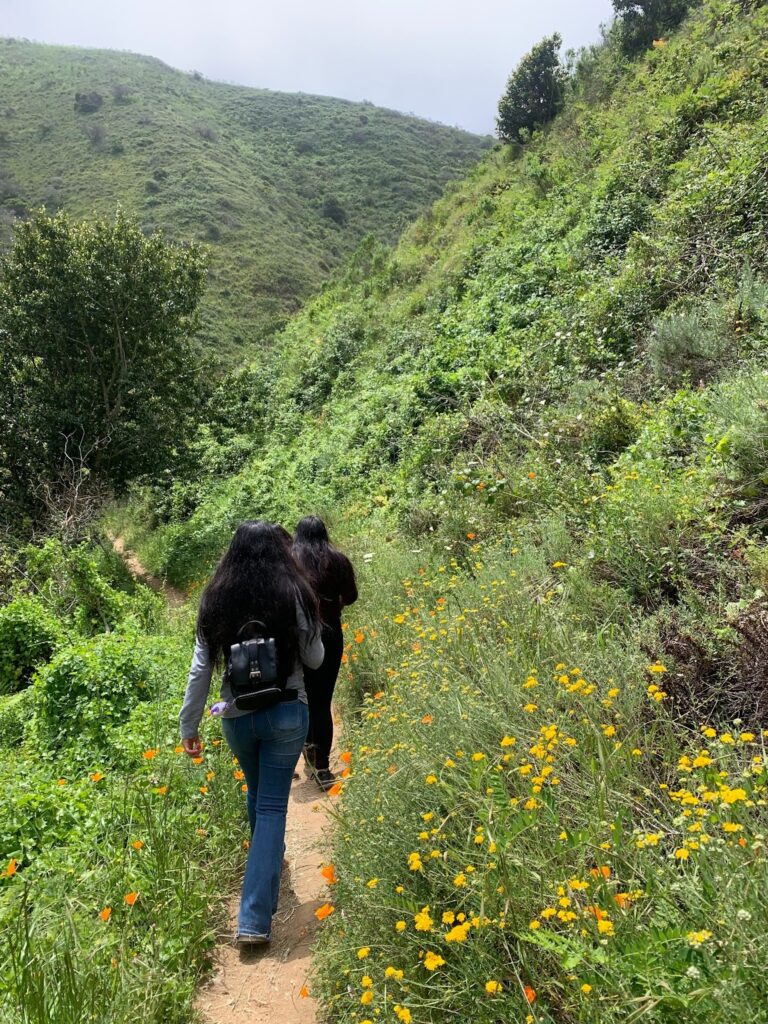
Parks California Director of Access & Belonging Programs, Myrian Solis Coronel summed up the day and said, “By fostering connections to nature, these students are more likely to benefit from a healthier mind and body. And over time, we hope, they will care for nature, just like nature cares for them. Taking action to protect the planet starts with experiences like today’s. We are so thankful to PG&E for their support in cultivating the next generation of outdoor stewards, here and throughout the state.”
Through Route to Parks, Parks California, supports organizations across California to improve access to State Parks for underrepresented communities. In January 2024, we announced the Route to Parks grantees including 29 organizations aiming to bring 5,000 people to state parks. Parks California and PG&E Corporation Foundation share the same vision of getting people outside to experience these extraordinary places and find a sense of belonging in nature.
